|
LAND OF CORAL - MOUNTAINS OF DREAMS
THE ITALIAN DOLOMITES
By Cliff Booker
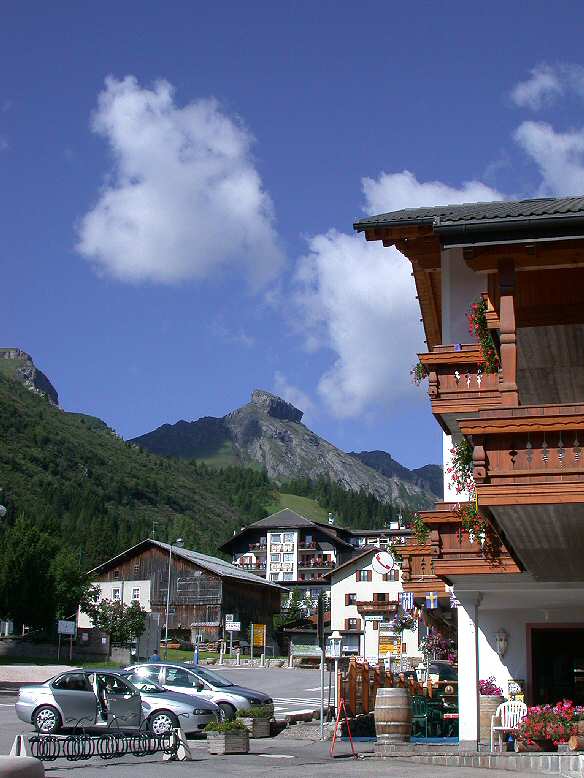
Arabba Centre
The beautiful town of Arabba in northern Italy has become our home from home (courtesy of Collett's Mountain Holidays) for two delightful weeks each summer for five of the past six years.
Back in the summer of 1999 we were fortunate enough to be asked to lead wildflower walks for this rapidly developing company who, to this day, specialize in an ever-increasing range of mountain activities which include - Via Ferratas, high and low-level escorted walks, glacier treks and informal painting instruction.
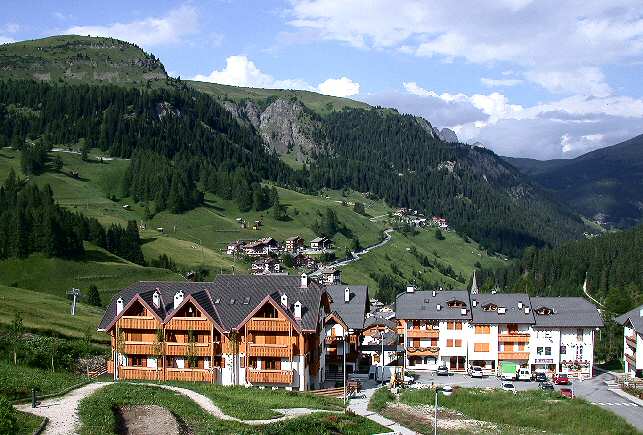
Balcony View
Arabba, set as it is, in the south eastern corner of a rectangle formed by the four magnificent passes that completely circumnavigate the Sella massif, is a marvellous base from which to explore the stupendous limestone mountains that are the Italian Dolomites.
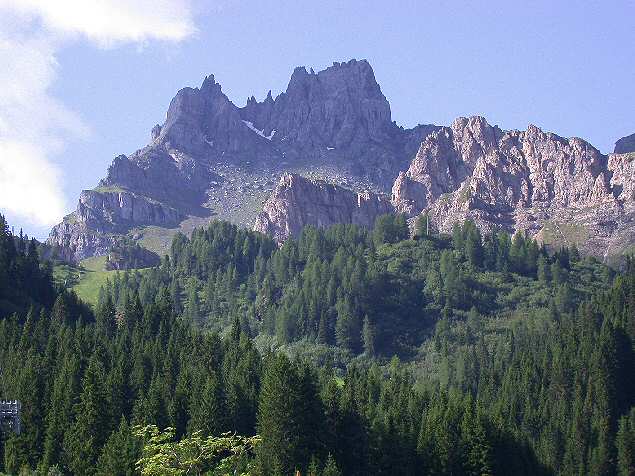
Balcony View
We, and other lucky enthusiasts, lead flower walks from the beginning of June through to the middle of August and, over the past few years, we have been fortunate enough to have seen a large proportion of the magnificent plants that make up the unique flora of this high mountain world.
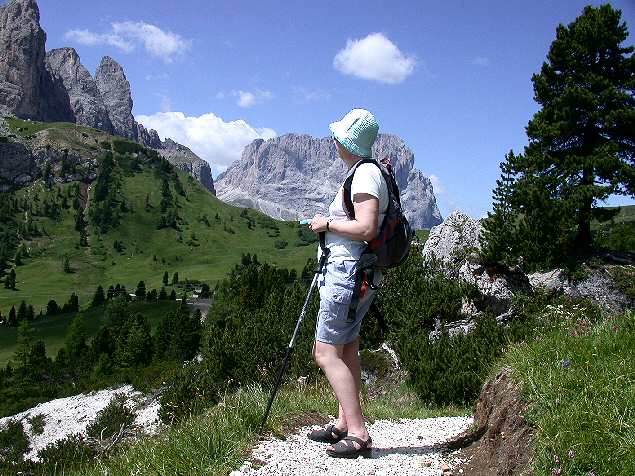
Admiring The View
This year (2005) our tour of duty began on the 29th June and we experienced perhaps the worst summer weather of our trips so far, but nothing (and especially not a typically 'English' mixture of rain, sun, mist chill and snow) could detract from the quality or range of plants that we encountered during our forays into these richly flowered peaks.
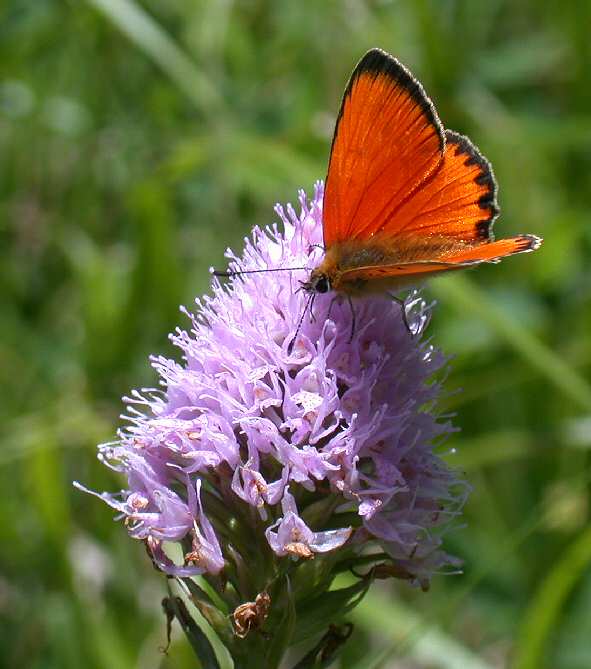
Orange On GlobeOrchid.
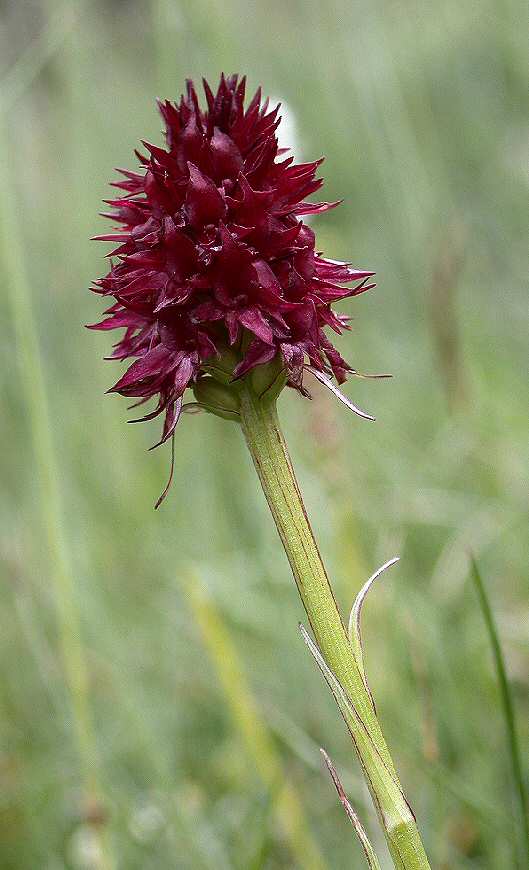
Orchid
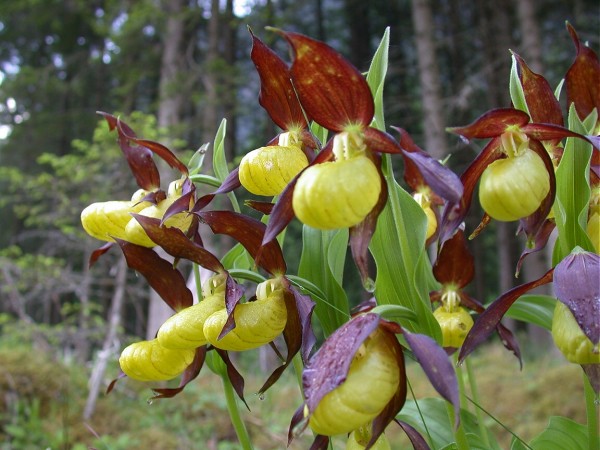
Cyps. Faces
The Dolomites support a huge number of species amidst habitats that range from forested valleys through profuse upland meadows to high barren scree and boulder fields. The meadows and valleys are unexpectedly green and verdant, the forests support colonies of orchids unrivalled in their beauty, the majestic mountains glisten white (until the unparalleled sunsets colour them crimson and gold) and the air is so pure that lichens and mosses coat every rock. It goes without saying that the Dolomites would feature very highly in any list of the world's most beautiful mountain ranges.
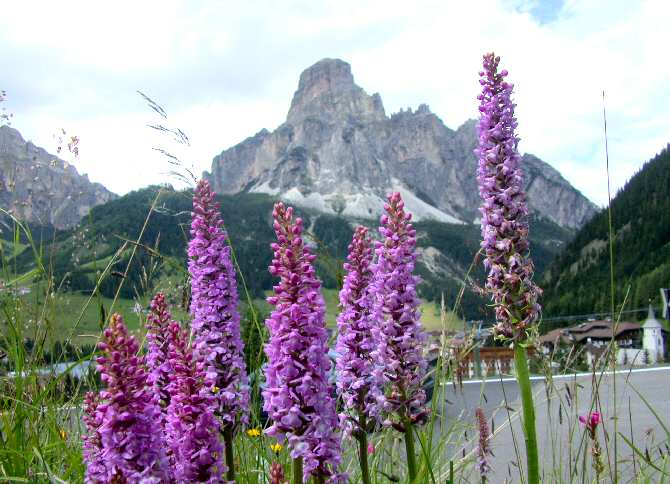
Orchids Near Corvara.
As flower walk leaders we take parties of between two and twenty two guests to areas of known (or suspected) floral beauty and our walks are planned to accommodate all ages, abilities and degrees of interest. On consecutive days we can find ourselves walking (as happened this summer) with eager young children scooting off through the meadows in search of 'big orange flowers'; a professional photographer and his assistant with an enormous tripod and medium format camera; various Alpine Garden Society or SRGC stalwarts with an unquenchable passion for plants; complete newcomers to the mountains espying their first alpine gems (their gasps of delight are one of our greatest sources of pleasure), and even a rare baby in a tartan papoose gurgling with joy in the sunshine. (A future member of the SRGC if ever I saw one)! Our guests are always wonderful and the shared experiences of discovering new and enchanting species can enliven many an evening meal (as if the continually flowing wine wasn't enlivening enough al
ready)! But please don't start me off on Collett's hospitality…simply heavenly food in such beautiful surroundings!
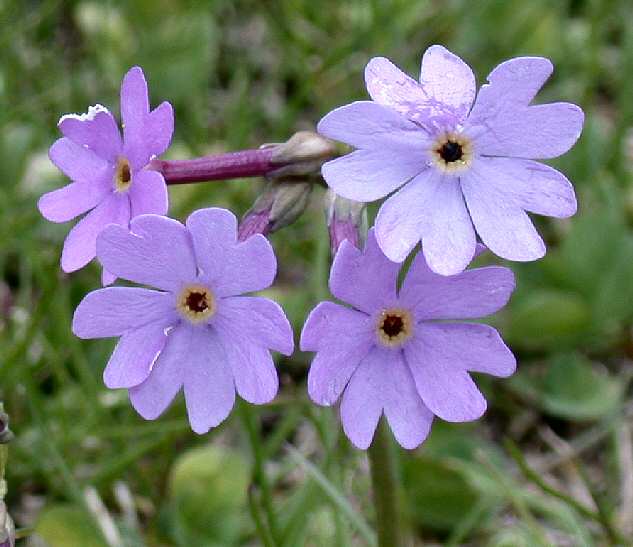
Primula longiflora.
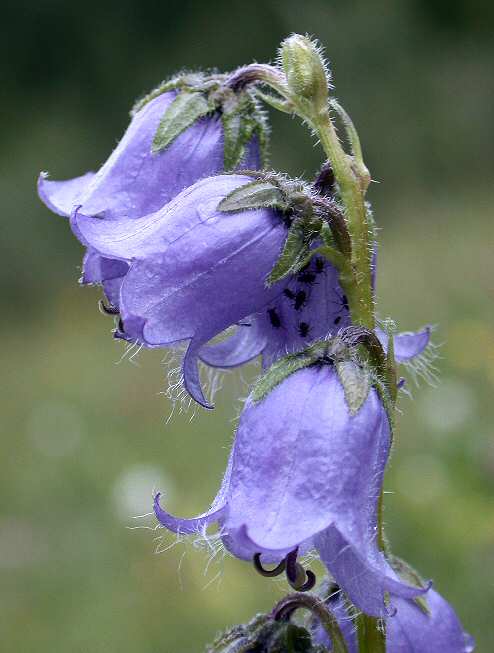
Campanula barbata.
So to the plants…..these splendid mountains play host to many of the plant families that seem so common yet so glorious throughout the Alps…gentians, primulas, geums, soldanellas; campanulas; linarias; potentillas, to name but a few….and these limestone fortresses also cradle rare, endemic and sometimes quite elusive species that generously repay any amount of searching with their exquisite beauty.
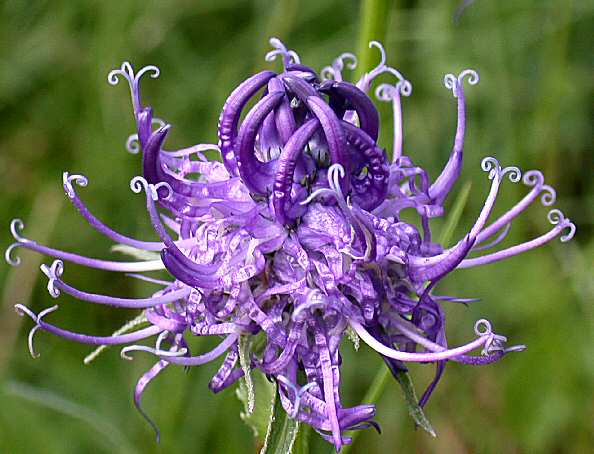
Phyteuma.
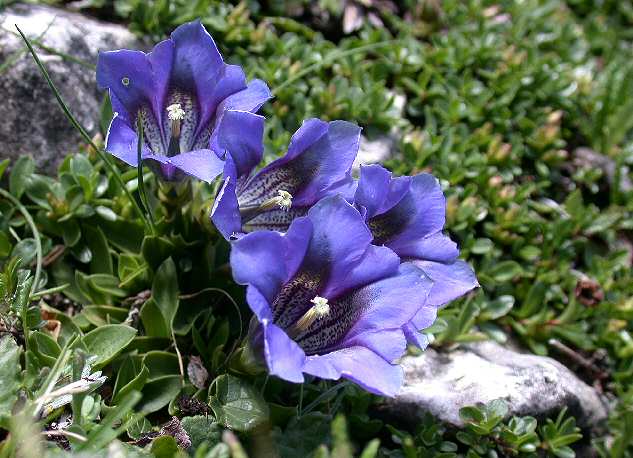
Gentiana acaulis
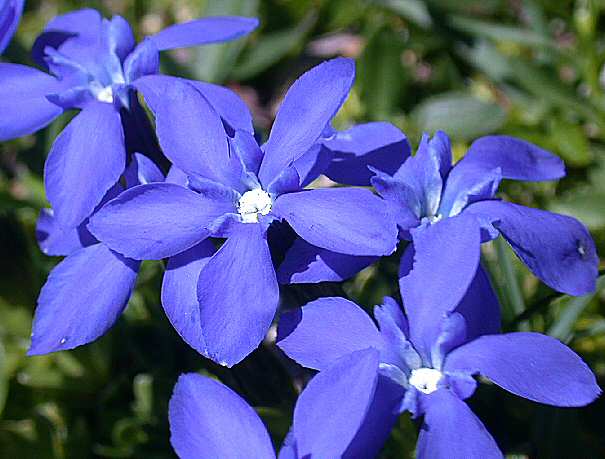
Gentiana verna
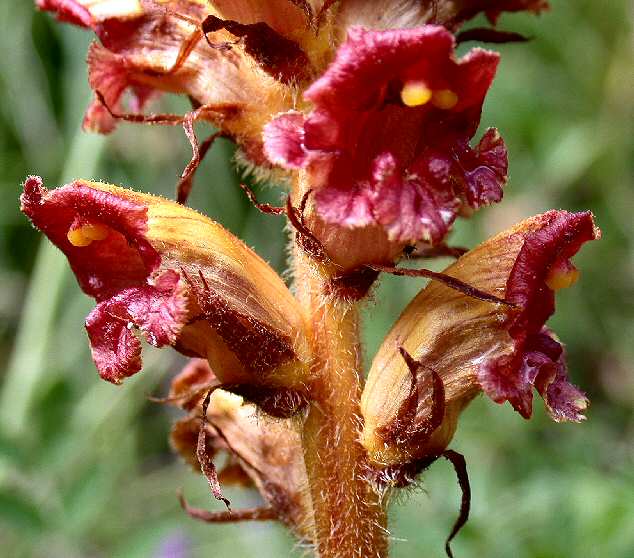
Orobanche
The constantly changing meadows are especially rich with species….. salvias, trollius, gentians, orobanches, phyteumas and valerians, while orchids of every persuasion abound from early to mid-summer.
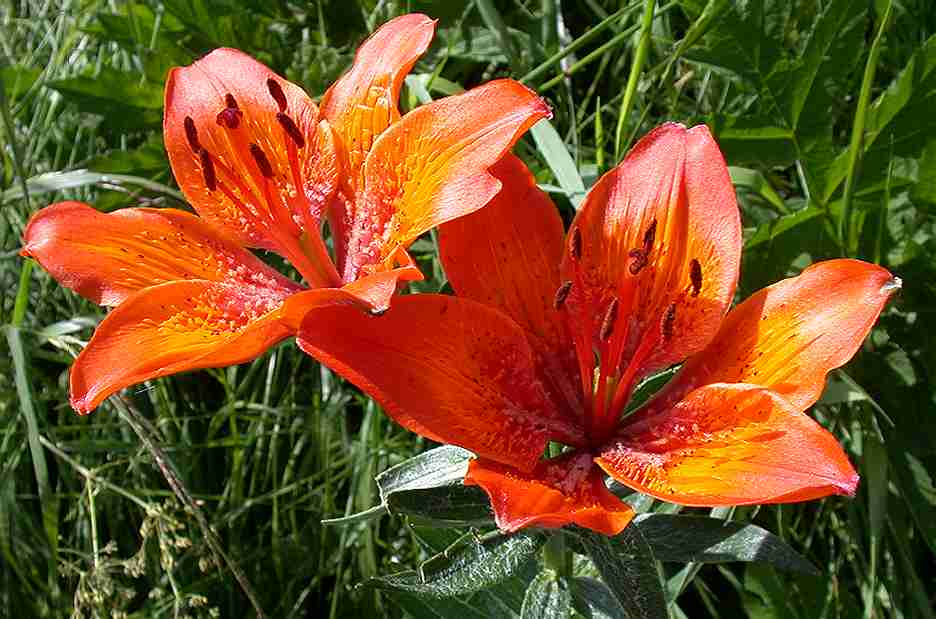
Lilium
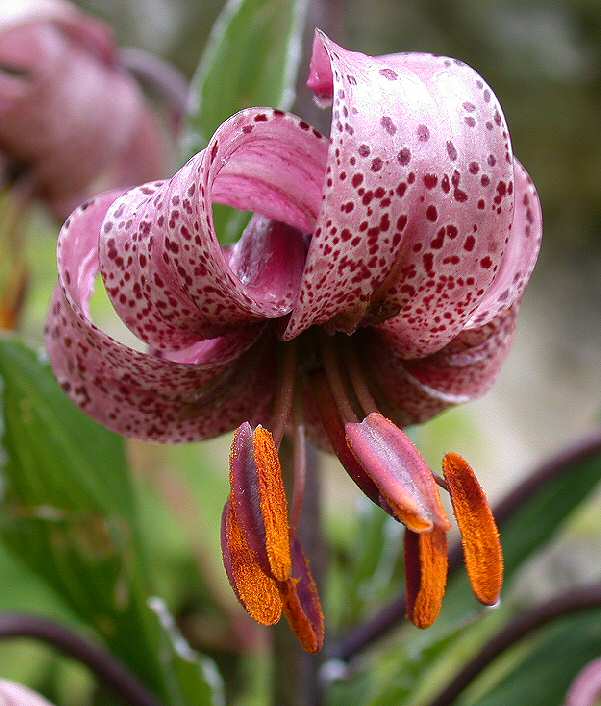
Lilium Martagon

Lilium Martagon.
Stunning lilies bloom from the middle of June onwards and fine stands of these bright orange (Lilium bulbiferum) and purple (Lilium martagon) bulbs can light up a hillside. The intense flame-orange hue of Lilium bulbiferum can seem slightly incongruous in a field of pastel shades but closer inspection will reveal a flower of outstanding beauty and form. The same can be said of Lilium martagon, with its pendulous purple-pink flower heads, each of which will entrance the most curious of flower enthusiasts, whether they be armed with a digital camera or a pollinating proboscis.
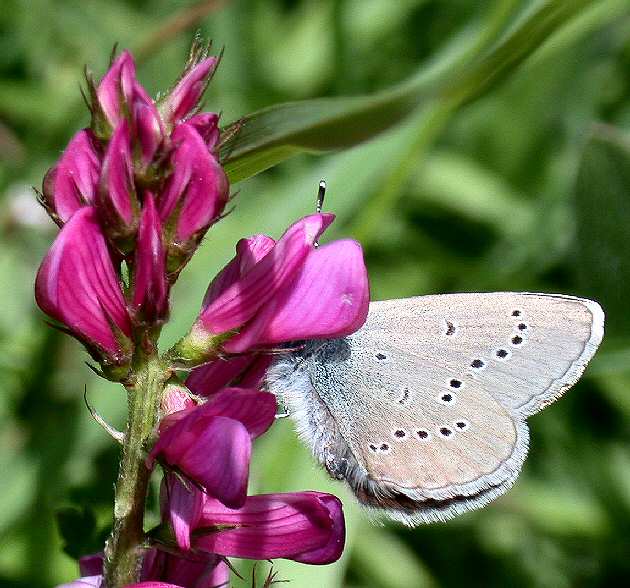
Blue On Bloom
Insects (usually beautiful) are a common sight in the Dolomites and photographic images that combine both fauna and flora can prove particularly appealing.
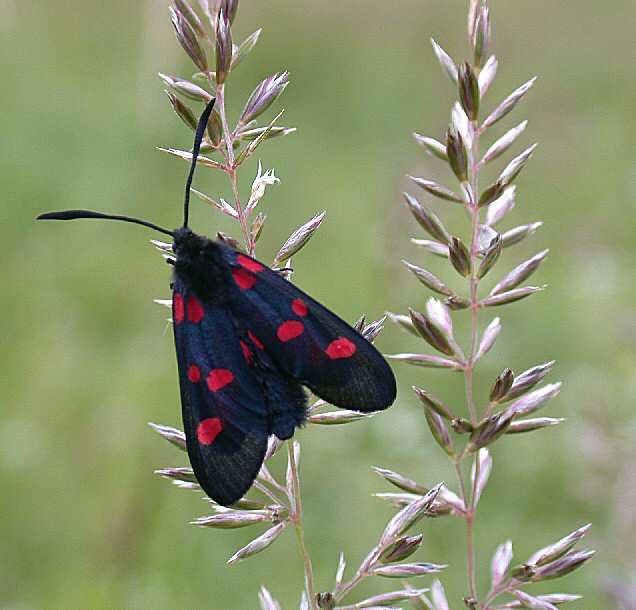
Burnet On Grass
Forests yield an amazing variety of species from late May onwards and the tall pines provide much needed shade from an intense mid-summer sun. Many of the well-signposted paths wind, for at least part of their course, through upland woods and deep forest glades. One can often negotiate meadows, screes, belvederes, high barren plateaus and shady wooded valleys (and the odd Refugio) during one moderate but uplifting walk.
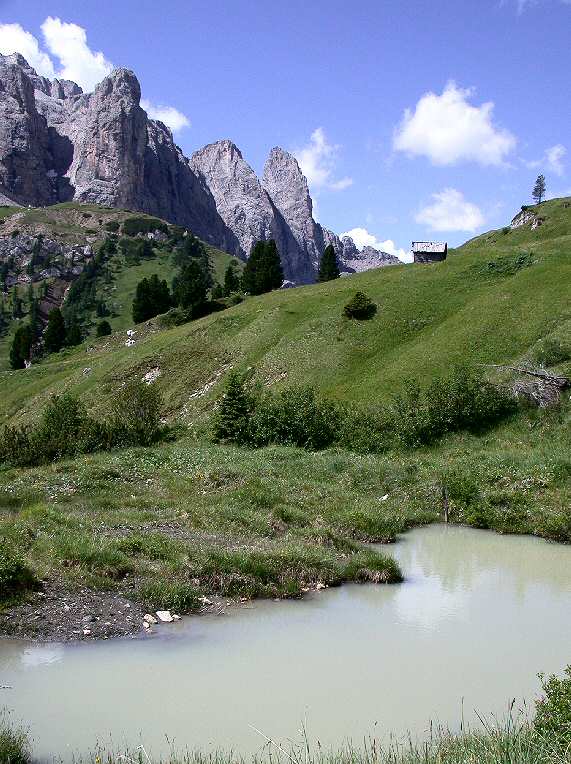
Gardena Scene.
Wildflower hikes are designed to last between three and six hours, though much of this time is taken up with the less arduous pursuits of searching for, identifying and photographing the prettiest or rarest of the plants that we find.
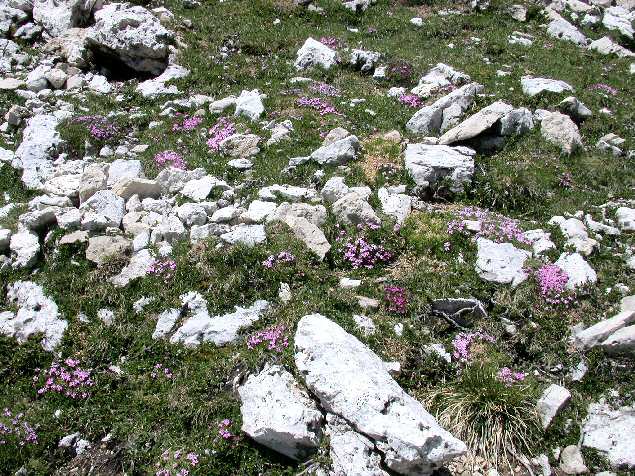
Silene acaulis everywhere.
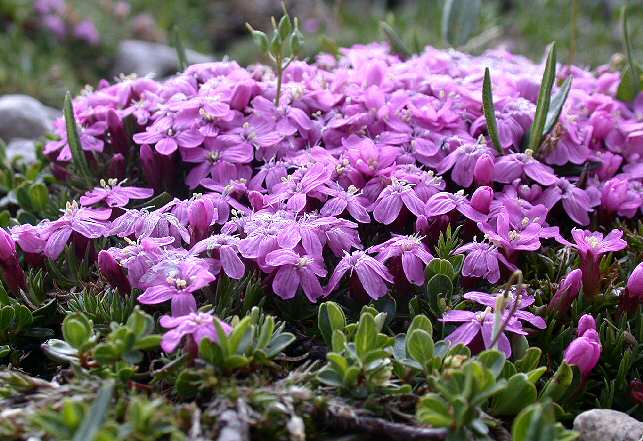
Silene acaulis.
The detritus of these constantly eroding monoliths form screes, chasms and rock fields of vast proportions and such seemingly arid and desolate domains have become home to a wonderful array of alpine cushions and crevice plants. Peaks and pinnacles abound and, apart from providing a playground for dedicated rock climbers and via ferrata specialists, they make a splendidly photogenic backdrop for a range of plants that has to be seen to be believed.
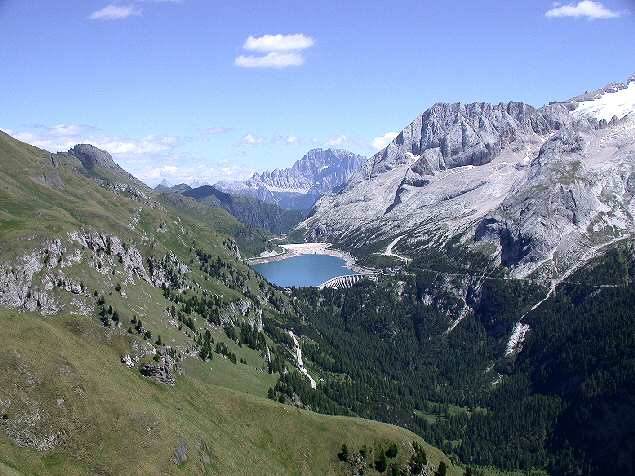
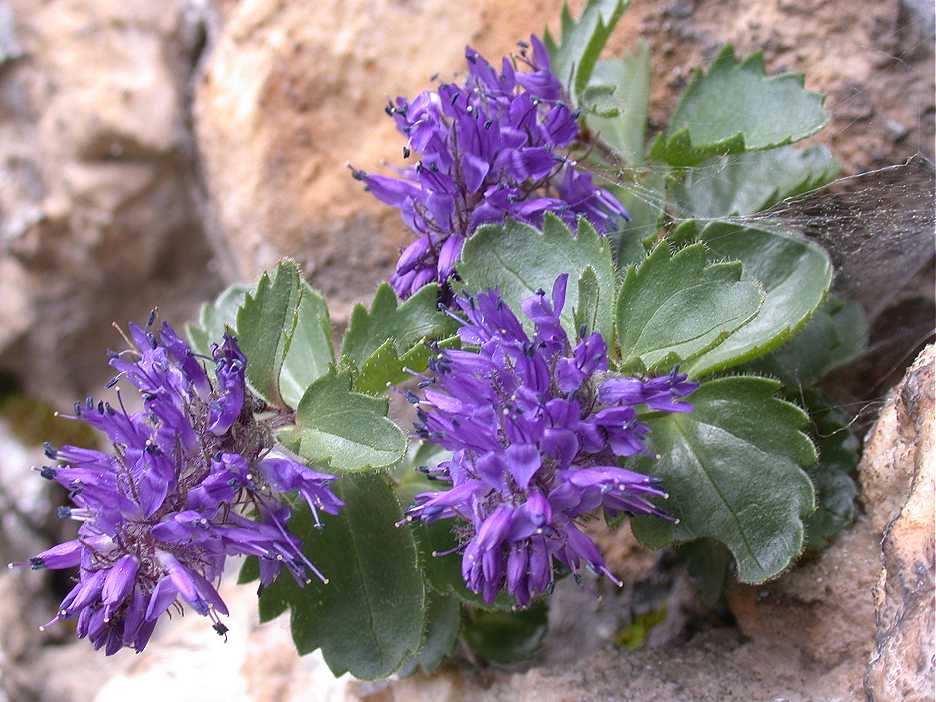
Paederota.
Boulder fields prove very amenable sites for 'static' flower walks, where a party of enthusiasts literally ambles among the huge rocks, examining the multitude of fissures, cracks and crevices for rare endemics such as the enchanting Paederota bonarota, a purple-blue veronica that hangs in racemes from shady nooks and crannies.
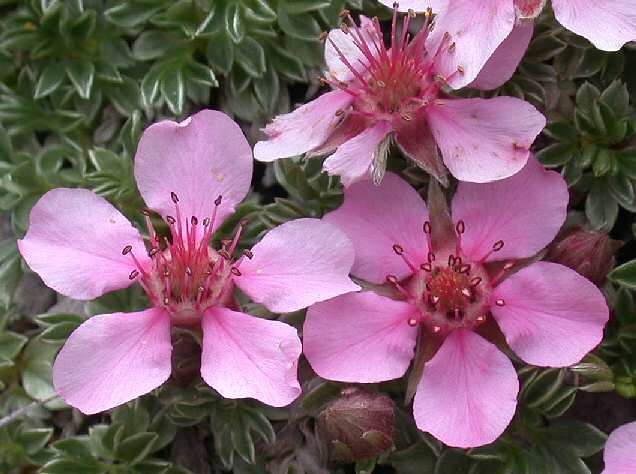
PotentillaNitidaRubra.,
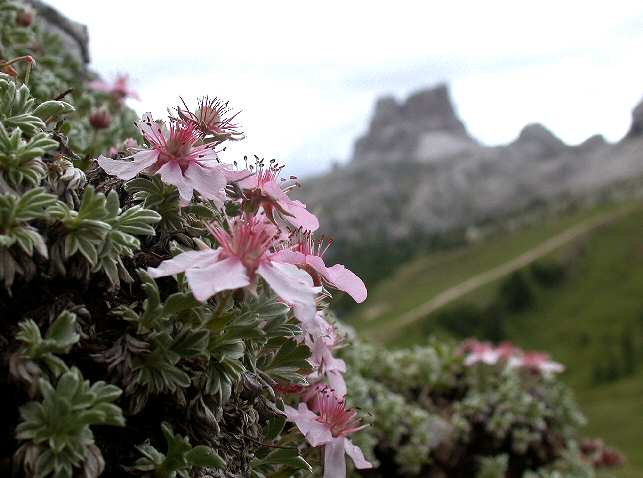
PotentillaNitidaRubra
The spectacular Potentilla nitida rubra is another gem that catches both the eye and the heart of all who see it, with its wide contoured mats of tiny silver leaves and rose-like pink, white or carmine flowers.
An equally attractive pink flower can be seen on the unusual Rhodothamnus chamaecistus….unusual, in so far as this is one of very few ericaceous plants that actually prefer to grow on limestone. The pink of this delightful dwarf shrub could be described as more candy-floss than carmine, but never less than exquisite.
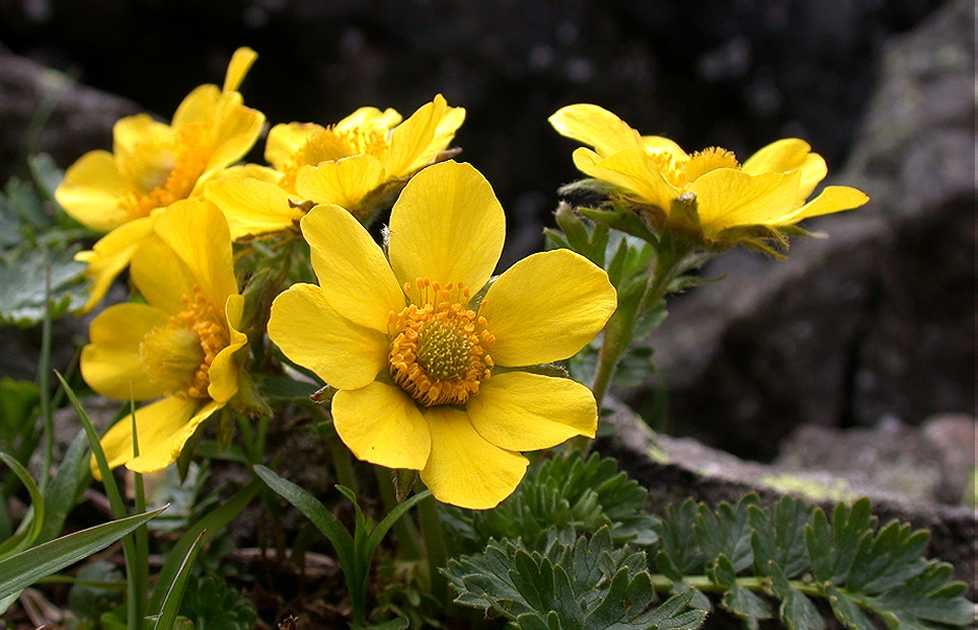
Geum reptans
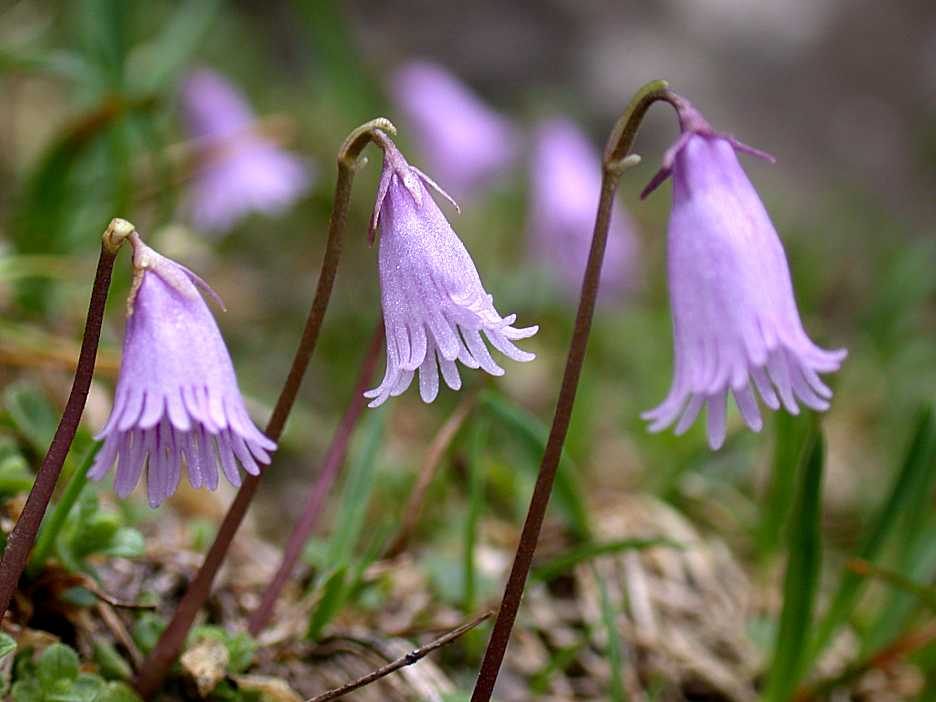
Soldanella
Mauve soldanellas and bright yellow geums abound in the short turf at the base of these enormous rocks while the pastel pinks of primulas and the tantalizing blues of the spring and trumpet gentians dot the sun-drenched 'lawns' between the mammoth fragments. These high meadow areas also support large colonies of pulsatillas…in white (Pulsatilla alpina), yellow (Pulsatilla alpina apiifolia) and the sublime purple-backed, white-throated, intensely hairy spring pulsatilla (Pulsatilla vernalis). Massed feathery seed heads of these pasque flowers (and the very similar, but much smaller seed heads of mountain avens - Dryas octopetala) form one of the many enduring images of summer pastures at these high elevations.
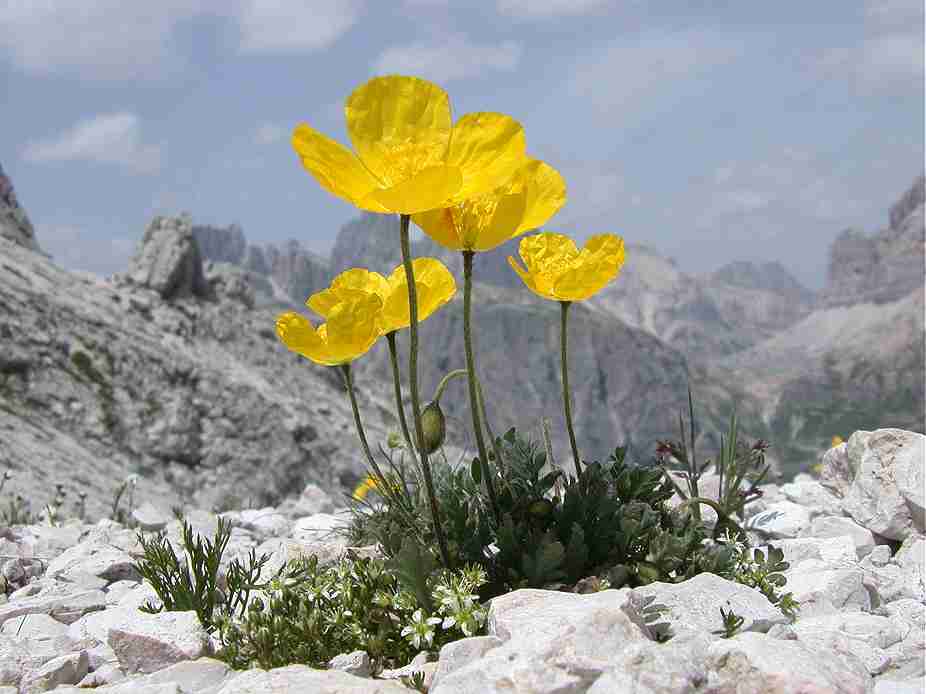
Poppy.
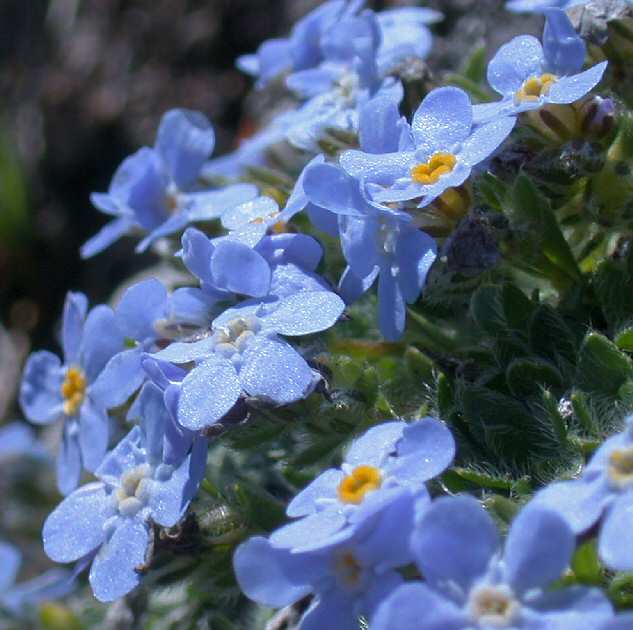
Eritrichium nanum.
The 'king of the alps'; Eritrichium nanum can also sometimes be found in narrow cracks on these immense limestone boulders, but only at the highest altitudes and, seemingly, in the least accessible of places…on barren, exposed ridges where tiny poppies (Papaver rhaeticum) nod gently in the warm summer breezes, where views across to the imposing Marmolada glacier defy you not to take a surfeit of photographs and where that doyen of alpine plants; Ranunculus glacialis grows and thrives in it's high mountain home. A land where snow can linger all summer, where even the elusive marmots do not dare to venture and where we, sadly and most reluctantly, must leave when our fortnight in paradise is over.
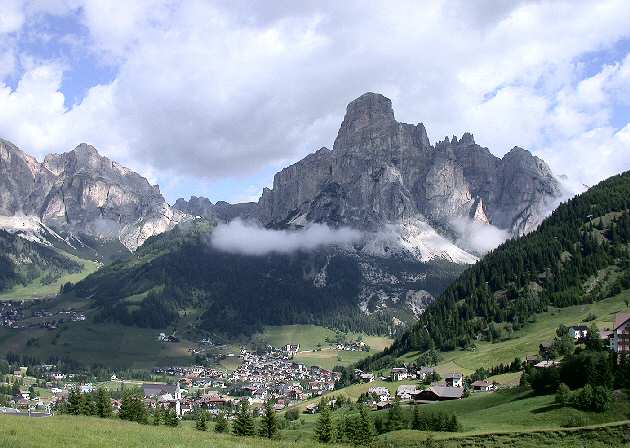
View Over Corvara.
I could wax on about the splendours of the Dolomites for any number of pages, but this would only serve to clog up the SRGC website….suffice it to say that often 'pictures speak louder than words', so I will let my camera do the talking for the rest of this article and leave you with a selection of summer images from these most beautiful of mountains. Better still, visit this haven of alpine beauty yourselves…you will not regret it!
For further information about Collett's Mountain Holidays please visit:- www.colletts.co.uk : Telephone 01763-289660/289680 or write to:- Collett's Mountain Holidays, Harvest Mead, Great Hormead. Buntingford. Hertfordshire. SG9 0PB.
All images used in this article are copyright of the photographer; Cliff Booker, who can be contacted on - c.booker2@ukonline.co.uk
^ back to the top ^
|

